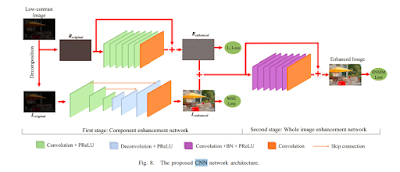Learning a Deep Single Image Contrast Enhancer from Multi-Exposure Images

Aim: To build a dataset to learn a powerful CNN-based SICE enhancer from multi-exposure images. Proposed system: propose to use the convolutional neural network (CNN) to train a single image contrast enhancement (SICE) enhancer. A CNN can be easily trained as the SICE enhancer to improve the contrast of an under-/over-exposure image. Overcome: One key issue is how to construct a training data set of low-contrast and high-contrast image pairs for end-to-end CNN learning Advantage: CNN based SICE method learns a complex nonlinear mapping function to map a low-contrast (either underexposure or over-exposure) region to a good contrast region. powerful CNN-based SICE enhancer, which is capable of adaptively generating high quality enhancement result for a single over-exposed or underexposed input image. Existing System: Previous SICE methods adjust the tone curve to correct ...
